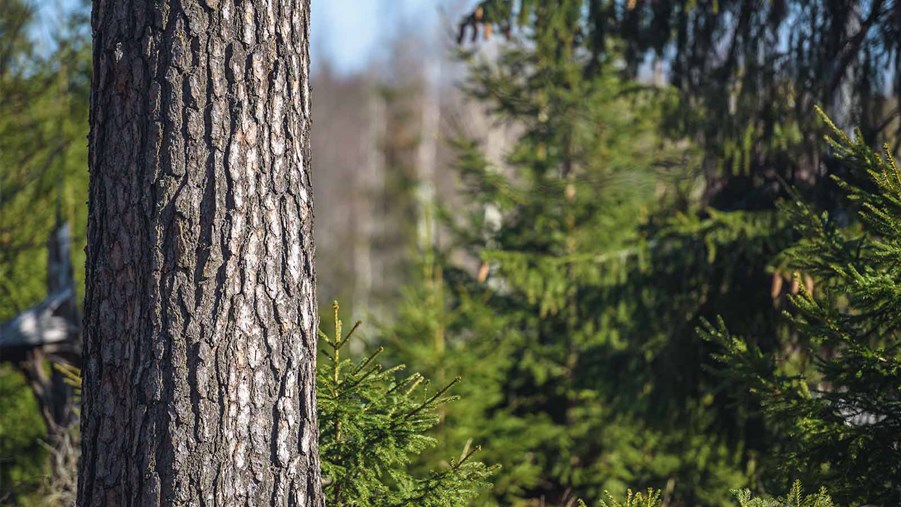The majority of forests in Sweden that were established before large-scale tract logging was introduced in the 1950s are continuity forests. This means that areas classed as primary forests and old-growth forests, for example, can also be included in the Swedish definition of continuity forest.
In 2011, the Swedish Forest Agency published the following definition of continuity forest:
A forest that has nature values whose presence can be explained by the long-term presence of suitable forest environments and substrates in the particular forest or in its vicinity.*
The original 2004 definition defined continuity forest as forestland that had been continuously covered with trees since the 18th century. However, the new description includes forest that has not been clear-cut. This means that the majority of forests in Sweden that appeared prior to the introduction of large-scale tract logging in the 1950s are classed as continuity forests.
How much continuity forest is there in Sweden?
There is a total of 28 million hectares of forest in Sweden. Estimates of how much of this is continuity forest range from between 1.8 million and six million hectares.
Where are Sweden’s continuity forests?
Continuity forests are found all over the country, but they are particularly common in northwestern Sweden. This is because tract logging was introduced later in the north-west and forestry has been less intensive there. Many Swedish continuity forests are included in nature reserves, national parks or are voluntarily excluded from forestry activities by forest owners.
Do continuity forests always have high nature values?
No. Continuity forests often have high nature values, but this is not always the case. They may have been managed in such a way that they do not contain old trees, deadwood or threatened species even if they have never been cleared. Historically, continuity forests have often been dimensionally felled, (when only trees exceeding a certain diameter are felled), thinned, clear-cut or fertilized and still have unbroken continuity and are therefore classed as continuity forest.
Is it permitted to fell continuity forests?
Yes. The continuity forest concept is not used in Swedish forest legislation and there is no explicit ban on felling in such areas, as long as they are not included in nature reserves, national parks or voluntarily set-aside by forest owners.
Forest owners have the right to decide how they want to use their forest land based on existing legislation. Although continuity forests may have high nature values, this is not always the case. This means that timber from continuity forests can be used.
Can forestry be described as sustainable even if felling takes place in continuity forests?
Yes. Sustainable forestry aligns with international principles on sustainable development. This means that forestry is economically, ecologically, and socially sustainable over the long term. Sustainable forestry does not only relate to measures taken in specific stands; it must also be conducted and planned at landscape level. Different nature values need to be taken into account for all felling activities, while certain areas are completely excluded from use.
Some continuity forests have high nature values. In such areas, responsible logging-free forestry methods can make timber production possible, or there may be reasons to entirely exempt an area from forestry. However, there are also continuity forests that do not have high nature values, so they can be used for forestry activities.
*Translated by Swedish Forest Industries from the Swedish original.
